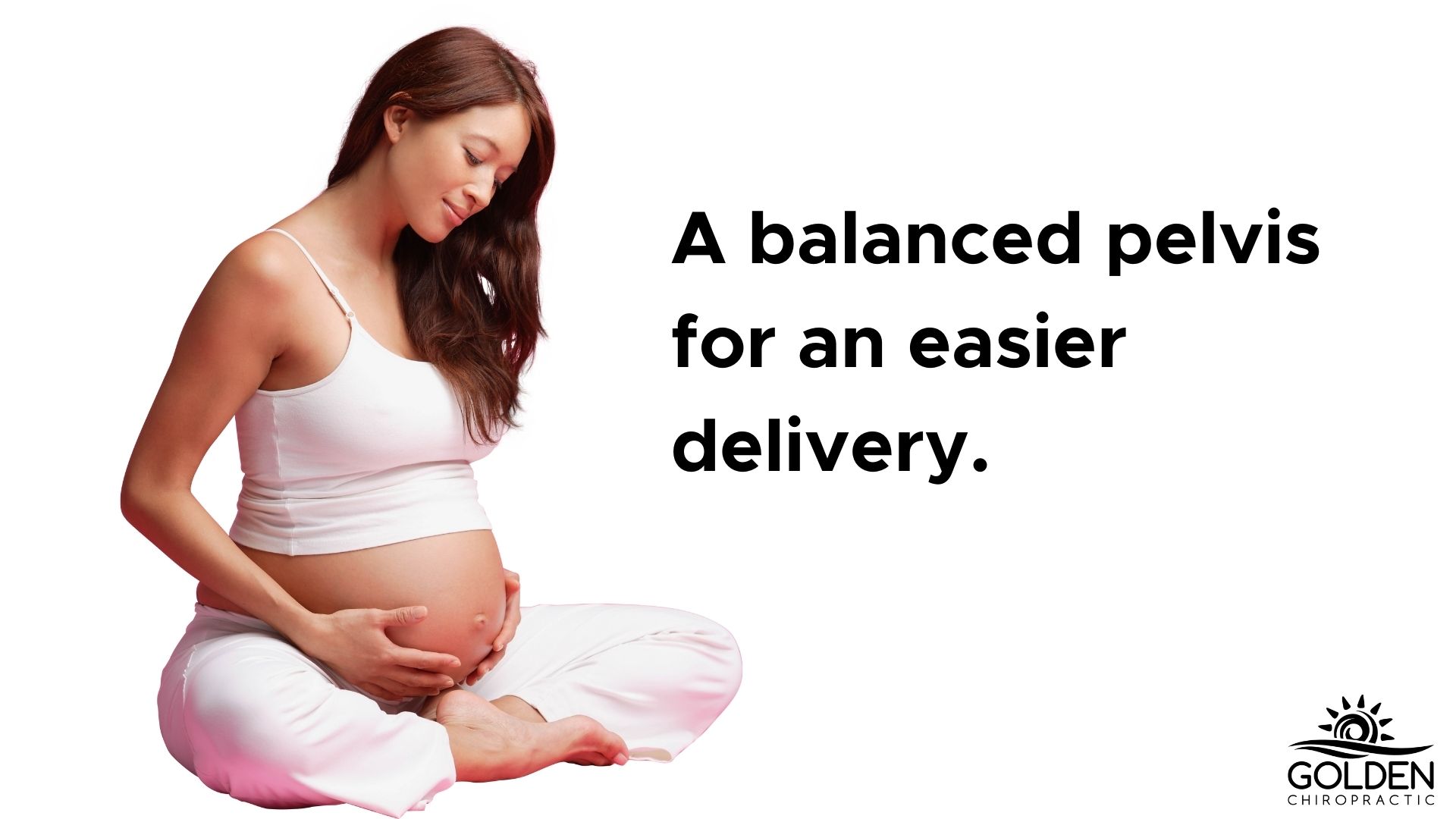
07/07/2022 by Dr. Goldi Jacques-Maynes
Easier Birthing with a Balanced Pelvis
For many expectant moms, fears about delivery complications are very real. One of the most common fears associated with birthing is having their baby move into a breech position. The good news is that there are techniques and exercises that help keep babies out of the breech position.
Babies are innately intelligent — they want to be in that ideal position for birth. When they aren’t able to get there before birth, chiropractic can help.
What does it mean to have a breech baby?
For babies in the womb, there are three main positions:
- Breech position: a baby lying bottom or feet first is in the breech position. With breech position, kicks are felt everywhere. Sometimes there is almost no movement at all. The mother’s belly may even look flat!
- LOA - Left Occiput Anterior position: when the baby is ideally positioned for birthing, moms feel big kicks at the upper right of their abdomen. They will also feel flutters from baby's hand movement at their lower right abdomen.
- ROA/ROP/LOP - Right Occiput Anterior, Right Occiput Posterior, Left Occiput Posterior Position: these positions are when the baby is head down but they aren’t quite as “ideal.”
Can a chiropractor diagnose a breech baby?
It is out of the chiropractor's scope to remark on the baby’s position in-utero. We can only remark on the mother’s body and how she is positioned.
Most of our pregnant patients want to know either why their baby is breech, or how to prevent their baby from becoming breech. This is where we come in. We balance the pelvis with the Webster Technique. We may also perform Myofascial Unwinding, Side-Lying Release, and assist with Forward Leaning Inversion.
Below is a list of our typical treatments for our pregnant patients. You can watch Dr. Goldi perform these on a pregnant patient here.
Webster Technique
The Webster Technique is a specific chiropractic sacral analysis and adjustment. The goal of the adjustment is to reduce the effects of sacral subluxation or SI joint dysfunction. In doing so, neuro-biomechanical function in the pelvis is facilitated.
Side Lying Release
The Side-lying Release can help labor progress, reduce pain, and calm the mother during a tense birthing.
Shake them Apples
Shaking the apples is an old technique created by a German midwife. This is used to promote relaxation of the butt, pelvic and inner and outer thigh muscles. It is also believed to help aid in the rotation and descent of the baby during labor.
Standing Sacral Release
The Standing Sacral Release may relieve pelvic pain or discomfort in the sacrum, lower back, hips, or tailbone. It may also help with rib pain, or even neck pain, as the spine is all connected to the sacrum. It can improve the likelihood of a breech baby flipping or a posterior baby rotating to anterior, as well.
Seated Myofascial Unwinding
Seated Myofascial Unwinding relaxes the mother and releases the diaphragm. The diaphragm is the counterbalance to the pelvic floor. Releasing it can help create more space for the breech baby to rotate.
Why is a balanced pelvis important for avoiding a breech birth?
A balanced pelvis means that the baby has enough room to move into the ideal position for birth. This ideal position, with the baby head down and back of the head to the left, means easier birth for mother and baby. When the pelvis is imbalanced, the baby experiences constraints in the uterus. That means the baby cannot move into that “ideal” position, which can result in a breech position.
An imbalanced pelvis can make birthing and baby's early life a lot harder, possibly causing:
- Longer labor
- Increased pain
- Increased interventions in labor
- Increased chance of injury to mother and baby
- Baby may be born with asymmetry in cranial bones or torticollis
- Difficulty nursing due to tension patterns of the neck and head
What causes pelvic imbalance?
Pregnant bodies go through many changes. One of the big changes is a loosening of ligaments, which can cause pain, discomfort and structural movement. Structures in mom's body that can cause pelvic imbalance include:
- Psoas major muscles
- Psoas minor muscles
- Piriformis muscles
- Coccygeus muscles
- Quadratus Lumborum muscles
- Abdominal muscles
- Hip rotator muscles
- Sacrum
- Sacroiliac joints
- Pubic bones
- Round ligaments
- Sacrotuberous ligaments
- Inguinal ligaments
- Broad ligaments
- Uterosacral ligaments
- Diaphragm
- Pelvic fascia
Constipation and scar tissue can also cause pelvic imbalance.
How long does it take for chiropractic to balance the pelvis?
After chiropractic treatment, some babies correct their position that same day. Others may take more time depending on the level of constraint present. We suggest coming in as often as you can —as soon as you find out your baby is breech — until the baby corrects.
Our recent patient (we'll call her Patient M) is in her early 30s, and pregnant with her second child at 36 weeks. She was told last week that her baby is breech and wants to do anything she can to help her baby move.
After one chiropractic session — applying Webster Technique, a side-lying release, and Forward Leaning Inversion — she says her baby feels more “diagonal” in her belly. This was very encouraging to her. She's feeling hopeful that continued chiropractic care will put her baby into the ideal birth position just in time!
What are the signs that your baby has/is correcting?
You may feel lots of movement in your belly. More pressure or weight near your left hip pocket may be the baby's head, which is ideal. Your ultrasound tech, OB, or midwife are also able to help you determine where the baby is.
What can pregnant women do to help prepare for an easier delivery?
Spinning Babies Daily Essentials lists exercises to help you lengthen muscles and increase range of motion to make space for baby’s best birth position.
The Serola Belt provides support to SI joints and creates stability during pregnancy.
This very detailed ebook explains everything in depth with illustrations: Helping your Breech Baby Turn
Those experiencing pregnancy related discomfort, or curious about their baby's position in the womb should come see us. Book online here.
